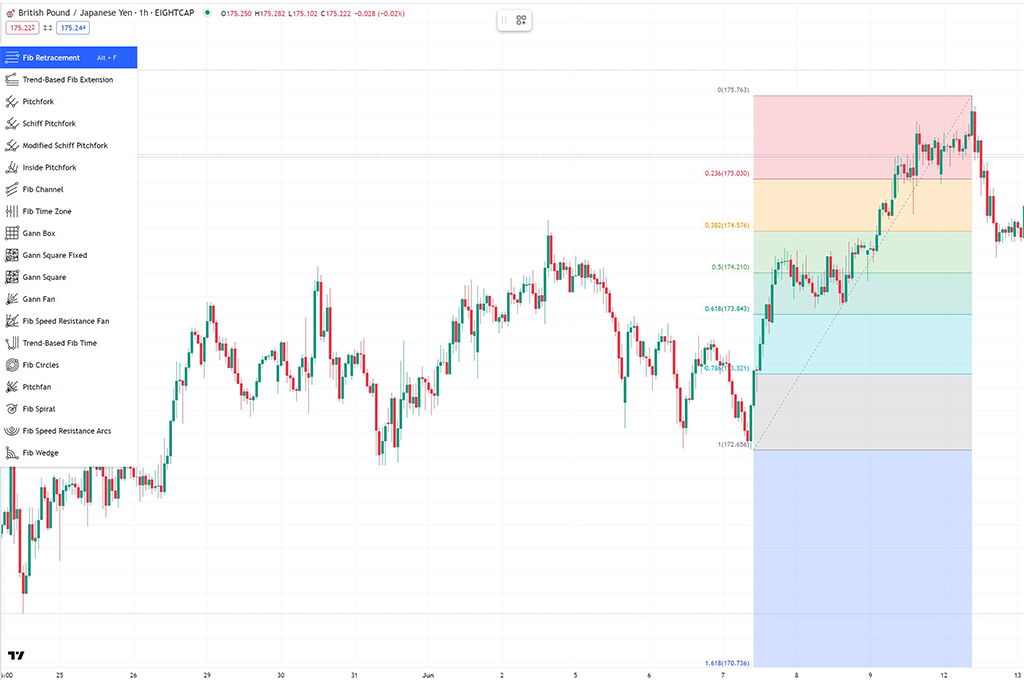Most Common Exit Point Indicators on TradingView

Knowing when to exit a trade can make a significant difference in your profitability. To assist traders in making informed decisions, TradingView offers a wide range of exit point indicators. These indicators help identify potential exit points based on various technical analysis methods. In this article, we will explore some of the most common exit point indicators available on TradingView and provide examples to illustrate their application.
Moving Average Crossover
One of the simplest and widely used exit indicators is the Moving Average Crossover. It involves the intersection of two moving averages of different periods, such as the 50-day and 200-day moving averages. When the shorter-term moving average crosses below the longer-term moving average, it may signal a potential exit point, indicating a potential trend reversal. Conversely, a crossover in the opposite direction may signal an entry point.

Relative Strength Index (RSI)
The Relative Strength Index is a momentum oscillator that measures the speed and change of price movements. It ranges from 0 to 100 and is often used to identify overbought and oversold conditions. When the RSI enters the overbought zone (typically above 70), it suggests that the asset may be due for a reversal. Conversely, when the RSI drops into the oversold zone (typically below 30), it may indicate a potential exit point as the asset could be oversold.
Bollinger Bands
Bollinger Bands consist of a moving average with an upper and lower band that represent two standard deviations from the average. These bands expand and contract based on market volatility. When the price touches the upper band, it suggests that the asset may be overbought and due for a reversal. Similarly, when the price reaches the lower band, it indicates potentially oversold conditions.
Example: Suppose you are trading a CFD on a forex pair, and the price has consistently touched the upper Bollinger Band. This could be an indication of a potential exit point, suggesting that the asset may be overbought and due for a correction.

Fibonacci Retracement
Fibonacci retracement levels are horizontal lines that indicate potential support and resistance areas based on Fibonacci ratios. Traders often use these levels to identify potential exit points. When the price reaches a Fibonacci retracement level, it may encounter resistance, suggesting a potential exit point. Conversely, if the price breaks through a retracement level, it may signal a continuation of the trend.

Let’s focus on some of the custom-built exit point indicators on TradingView and provide examples of their usage:
Custom RSI Overbought/Oversold
The custom RSI Overbought/Oversold indicator allows traders to define their preferred overbought and oversold levels. By customizing these levels, traders can identify potential exit points based on their specific trading strategies. When the RSI indicator reaches the defined overbought level, it signals a potential exit point. Similarly, when it reaches the oversold level, it may indicate an exit opportunity.

Custom Volatility Breakout
The custom Volatility Breakout indicator helps identify potential exit points based on changes in market volatility. Traders can customize the indicator by specifying the desired period for measuring volatility. When the market experiences a significant increase in volatility, it may signal a potential exit point as prices may become more erratic or prone to reversals.

Custom Price Reversal Patterns
Custom price reversal patterns allow traders to define and identify specific chart patterns that signal potential trend reversals and exit points. Traders can customize the patterns based on their preferred chart patterns such as double tops, head and shoulders, or any other reversal patterns they find effective.
Remember, custom-built indicators on TradingView offer flexibility and customization options, allowing traders to tailor their exit strategies according to their trading styles and preferences. It’s important to thoroughly backtest and validate these indicators before incorporating them into your trading strategy.
* The information provided here has been prepared by Eightcap’s team of analysts. All expressions of opinion are subject to change without notice. Any opinions made may be personal to the author and do not reflect the opinions of Eightcap.
In addition to the disclaimer on our website, the material on this page does not contain a record of our trading prices, or represent an offer or solicitation for a transaction in any financial instrument. Eightcap accepts no responsibility for any use that may be made of these comments and for any consequences that result. No representation or warranty is given as to the accuracy or completeness of this information. Consequently, any person acting on it does so entirely at their own risk. Any research provided does not have regard to the specific investment objectives, financial situation and needs of any specific person who may receive it. It has not been prepared in accordance with legal requirements designed to promote the independence of investment research and as such is considered to be a marketing communication.
Please note that past performance is not a guarantee or prediction of future performance. This communication must not be reproduced or further distributed without prior permission.


